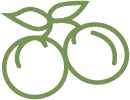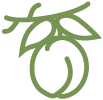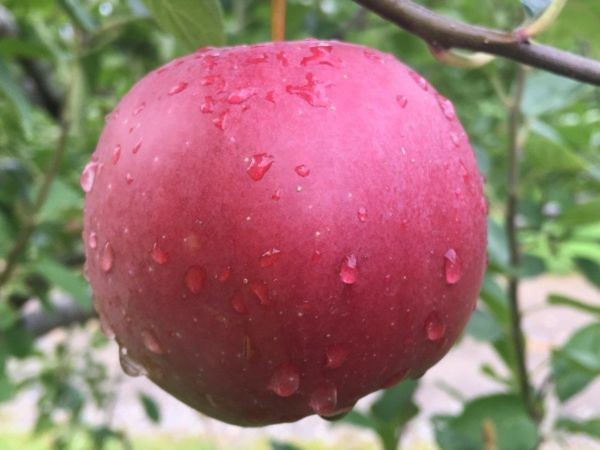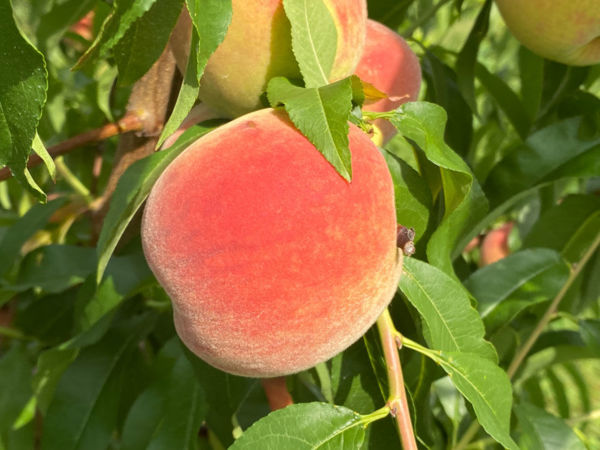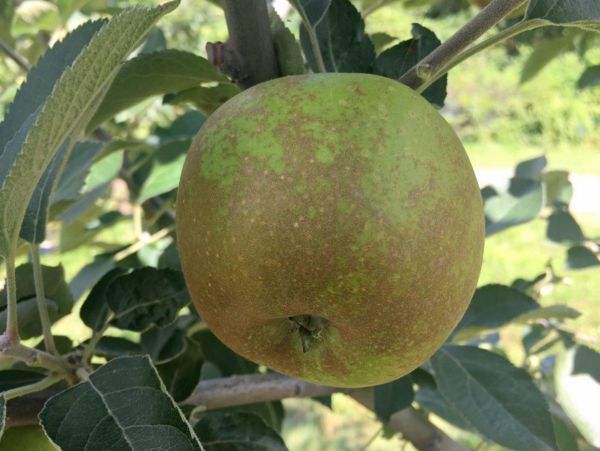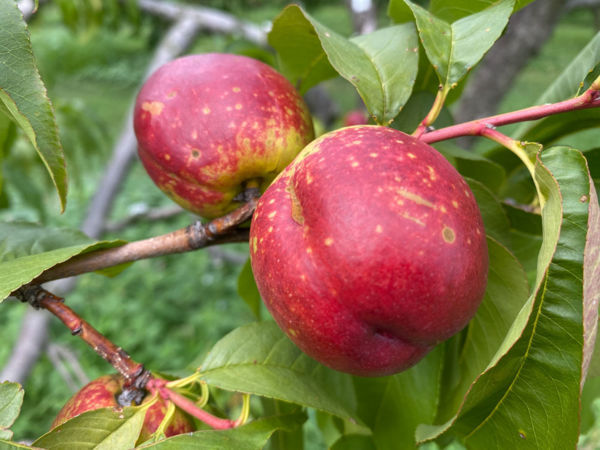An attractive, highly disease-resistant apple, ideal for organic growers.
Pear Psylla
Fruits Affected
Also See
Fruit Tree Diseases and Pests: An IntroductionList of Common Fruit Tree Diseases and Pests
Pear psylla is a small insect that arrived in America from Europe in the 1830's. The adult female lays her eggs on a pear tree starting in late January, and egg laying continues until petal fall. A single female will lay as many as 650 eggs.
Symptoms
Tiny cicada like insects; sooty mold and russeting on fruit surface; defoliation and stunting.
Organic Treatments
There are two ways to minimize psylla through cultural practice. First, certain varieties are less susceptible to psylla; these are usually russeted pears whose thick skin, one can assume, is impenetrable for the tiny insect. If you know that psylla is a problem in your area, avoid Bartlett, as this is a highly susceptible variety. Second, during the summer, you can make your trees less appetizing by pulling off the juicy water sprouts. These are best yanked off rather and pruned, to discourage regrowth. A 2% dormant oil at swollen bud and then Surround through petal fall will take care of the little buggers.
Conventional Treatments
2% dormant oil followed by 2 applications of Delegate from white bud through petal fall.
Insect Cycle
Pear psylla is a small insect that arrived in America from Europe in the 1830's. The adult female lays her eggs on a pear tree starting in late January, and egg laying continues until petal fall. A single female will lay as many as 650 eggs. The eggs are elongated, yellowish, and so tiny they are not usually visible without a magnifying lens. The adults and the hatched nymphs both feed by sucking juice from the leaves, stems, and fruit of pear trees (more commonly European than Asian). The adult will overwinter on the tree itself or in a sheltered area nearby.
The activities of psylla can both damage the fruit and weaken, defoliate, or kill a tree. If you suspect psylla on your trees, the adult will be easiest to identify: look for a very small (two millimeters), reddish-brown, cicada-like insect. When stationary, it holds its wings in a roof over its abdomen. The nymph in its first instar (developmental phase) is creamy-white and tiny, and with each molting it becomes larger, darker, and more oval. When the nymphs and adults feed, they secrete large amounts of honeydew, which is a pretty name for the high-sugar waste product (poop) created by insect feeding. This honeydew drips onto fruit and allows sooty fungus to grow. The skin of the fruit can be blackened and scarred or russeted in patches and streaks. This by itself doesn't seem so bad, and many home gardeners will not be bothered by such a minor imperfections. A heavy infestation of psylla, however, can cause defoliation and stunting of a tree. This syndrome is often referred to as "psylla shock." It is not well established, but there is also evidence that psylla also cause "pear decline" by injecting a toxin into the tree on which they are feeding.
For more information, see the Cornell Identification Factsheet on Psylla and the Cornell Guide to Growing Fruit at Home.
Featured Products
A few things we're loving right now...
A full-flavored, freestone white peach.
One of America's oldest apples, good for storage, baking, and cider.
A widely-grown, large, yellow-fleshed nectarine.





